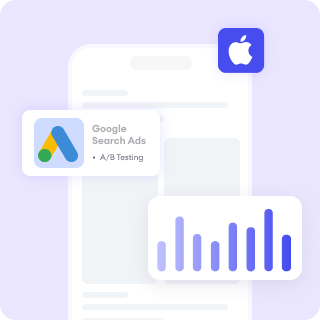Minimizing code in SEO is important because it speeds up page loading, improves user experience, helps search engines crawl your site efficiently, enhances Core Web Vitals, and boosts rankings by reducing unnecessary complexity.
Minimizing code in SEO is achieved by removing unused code, minifying files, optimizing CSS and JavaScript, and using lightweight frameworks to reduce complexity and improve site performance.
To boost your site speed, let's learn how to minimize these codes that contribute to unnecessary bloat or slow page rendering on your site.
Why Minimizing Code Matters
Minimizing code reduces the amount of data transferred between your server and the user’s browser. This leads to:
- Faster Load Times: Less code means fewer resources to download and process.
- Improved Core Web Vitals: Key metrics like First Contentful Paint (FCP) and Largest Contentful Paint (LCP) improve when your code is lean.
- Better SEO Performance: Google prioritizes faster-loading websites, so a streamlined codebase can give you a ranking edge.
- Enhanced User Experience: Users enjoy a smoother experience with less lag or delays.
1. How To Minimize CSS (Cascading Style Sheets) Code
CSS files can quickly become large due to unused styles, redundant rules, and excessive whitespace. Minimizing CSS involves:
- Removing unused CSS rules: Over time, your website might accumulate styles that no longer apply to elements, either because of design changes or unused components. You can use tools like PurgeCSS or UnCSS to eliminate these unused rules.
Example:
Before:
css
.old-class{
font-size: 14px;
}
.new-class{
font-size: 16px;
}
.unused-class{
color: #ff0000;
}
After:
css
.new-class{
font-size: 16px;
}
- Minifying CSS: Compress CSS by removing extra spaces, comments, and line breaks. Tools like CleanCSS or CSSNano can do this automatically.
Before minification:
css
body{
background-color: white; /* Body background color */
font-size: 16px;
}
After minification:
css
body{background-color:white;font-size:16px;}
- Using shorthand properties: Simplify long CSS declarations by using shorthand notation where possible.
Example:
Before:
css
padding-top: 10px;
padding-right: 15px;
padding-bottom: 10px;
padding-left: 15px;
After:
css
padding: 10px 15px;
2. How To Minimize JavaScript Code
JavaScript can have a significant impact on site speed, especially if it’s bloated or inefficient. Minimizing JavaScript involves:
- Eliminating unused or redundant code: Remove functions or libraries that aren’t being used. Use tools like Tree Shaking (for modern bundlers like Webpack) to remove unused JavaScript code.
Example:
javascript
function notUsed() {
console.log('This function is never called.');
}
- Minifying JavaScript: Similar to CSS, JavaScript can be minified by removing spaces, line breaks, and comments. Use tools like Terser or UglifyJS.
Before minification:
javascript
function sayHello() {
// This function says hello
console.log('Hello!');
}
After minification:
javascript
function sayHello(){console.log('Hello!');}
- Optimizing loops and functions: Inefficient loops and functions can cause performance bottlenecks. For example, using forEach() on large arrays can be slower than a regular for loop.
Example:
javascript
// Using forEach (less efficient)
array.forEach((item) =>{
console.log(item);
});
// Using a simple for loop (more efficient)
for (let i = 0; i < array.length; i++) {
console.log(array[i]);
}
- Asynchronous loading of scripts: Prevent JavaScript from blocking the page rendering by using async or defer attributes when including external scripts.
Example:
html
<!-- Async loading of script -->
<script src="script.js" async></script>
<!-- Defer loading of script until after page load -->
<script src="script.js" defer></script>
3. How To Minimize HTML Code
HTML code can be bulky with redundant tags, excessive attributes, and unnecessary elements that slow down page rendering. Minimizing HTML involves:
- Removing unused or redundant elements: Some HTML elements may no longer serve a purpose. Keep your HTML lean by removing extra divs, spans, or classes.
Example:
Before:
html
<div class="container">
<div class="row">
<div class="col">Content</div>
</div>
</div>
After:
html
<div class="content">Content</div>
- Minimizing inline styles and scripts: Avoid placing large blocks of inline styles and JavaScript directly in HTML files. Instead, link to external CSS or JavaScript files, which can be cached and are generally more efficient.
Example:
Before:
html
<div style="font-size:16px;color:red;">Hello</div>
After:
html
<div class="styled-hello">Hello</div>
CSS:
css
.styled-hello{
font-size: 16px;
color: red;
}
- Minifying HTML: Use tools like HTMLMinifier to remove unnecessary spaces, comments, and line breaks.
4. How To Minimize Images (and Image Code)
While not strictly code, images contribute significantly to page size and load time. Optimizing image-related code is critical for reducing load times:
- Compress images: Use efficient image formats like WebP, or compress large images with tools like TinyPNG.
- Use responsive images: Implement srcset to serve different image sizes based on the user's screen resolution or viewport.
Example:
html
<img src="image-small.jpg" srcset="image-medium.jpg 768w, image-large.jpg 1280w" alt="Responsive Image">
5. External Libraries and Frameworks
Third-party libraries (like jQuery, Bootstrap, or FontAwesome) can add unnecessary weight to your code, especially if you only use a small portion of them. Minimizing external libraries involves:
- Using only what you need: Instead of loading the entire library, you can include only the components you use. For instance, if you only need a few Bootstrap components, use a custom build of Bootstrap.
- Swapping out large libraries: For example, replace jQuery with vanilla JavaScript, as many modern browsers support native JavaScript functions that are faster than using jQuery.
6. Font Files
Web fonts, while great for styling, can increase the size of your website and delay rendering. To minimize their impact:
- Limit the number of fonts and weights/styles: Only load the specific font families and weights that are required by your design.
- Use font-display: swap: This ensures text remains visible while web fonts are loading, reducing render-blocking issues.
Example:
css
@font-face{
font-family: 'Roboto';
src: url('roboto.woff2') format('woff2');
font-display: swap;
}
Conclusion
To boost site speed, you should focus on minimizing the following types of code:
- CSS: Remove unused styles, minify your files, and use shorthand.
- JavaScript: Eliminate unused functions, minify scripts, and optimize loops.
- HTML: Clean up redundant elements, avoid inline styles/scripts, and minify your HTML.
- Images: Compress and serve responsive images based on device size.
- External Libraries: Load only the necessary components of third-party libraries.
- Fonts: Limit font families/weights and use font-display: swap for faster rendering.
By cleaning up your code and eliminating inefficiencies, you'll dramatically improve your site’s speed, enhance user experience, and improve SEO rankings.
Improve your website performance with FoxAdvert!
If you are looking forward to how to improve your website performance, our professional team of SEO experts at FoxAdvert can help you. Contact us today to start your journey 😊











